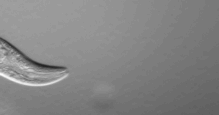Competitive athletes and bodybuilders may soon be able to add something better than anabolic steroids to their muscle-building and performance-enhancing arsenal of drugs. The Salk Institute has announced a new way to build muscle by suppressing a natural muscle growth inhibitor. Preliminary research indicates that the suppression of a a genome regulator called NCoR1 leads to increased muscle strength, size and endurance.
Ronald Evans, the lead project researcher in the Salk Institute Gene Expression lab, believes the discovery may lead to the development of pharmaceutical drugs that will give all the benefits of exercise to sedentary individuals.
“There are now ways to develop drugs for people who are unable to exercise due to obesity or other health complications, such as diabetes, immobility and frailty,” according to Evans. “We can now engineer specific gene networks in muscle to give the benefits of exercise to sedentary mice.”
Anabolic steroids have modest muscle-building effects in sedentary individuals. But for best results, individuals are required to modify their diet and engage in a form of resistance training.
Similarly, if a NCoR1-suppressing drug could do miracles for a couch potato, just imagine the benefits such a drug could have for elite athletes.
Furthermore, unlike steroids which have some adverse side effects especially in women, NCoR1 suppression has not been shown to cause any harmful side effects.
In an article entitled “NCoR1 Is a Conserved Physiological Modulator of Muscle Mass and Oxidative Function” but should have been called “Attention Steroid-Using Athletes – Read This For New Way to Build Muscle”, researchers reported the impressive results of experiments conducted in nematodes and mice.
Genetically-modified mice had denser muscle fibers, more massive muscle size and increased numbers of mitochondria. The mouse muscles performed better too. Mice with the mutation ran faster and further than untreated mice. Unfortunately, the mice with NCoR1 mutations were not compared with mice treated with anabolic steroids to see how two potential performance-enhancing techniques stack up.
While the published research involved genetic manipulations, Salk’s Gene Expression Lab is already searching for potential drug molecules that can suppress NCoR1 receptors.
Researchers believe there is a high probability that the results may be applicable to humans.
Elderly individuals and muscular dystrophy patients may be the target group for any new potential drug development but athletes will surely be on top of future developments.

Source:
Salk News. (November 18, 2011). Tweaking a gene makes muscles twice as strong. Retrieved from http://www.salk.edu/news/pressrelease_details.php?press_id=530
Related Posts :
- Federal Crackdown on Chinese hGH Leads to Huge Profits for Big Pharma
- Steroid Injections Lead to Spread of Deadly Illness in Tennessee – But It's Not Anabolic Steroids
- Steroid Convictions of MedXLife Anti-Aging Clinic Owners Thrown Out By Judge
- Sports Doctor Anthony Galea Will Not Be Prosecuted by Canadian Authorities

